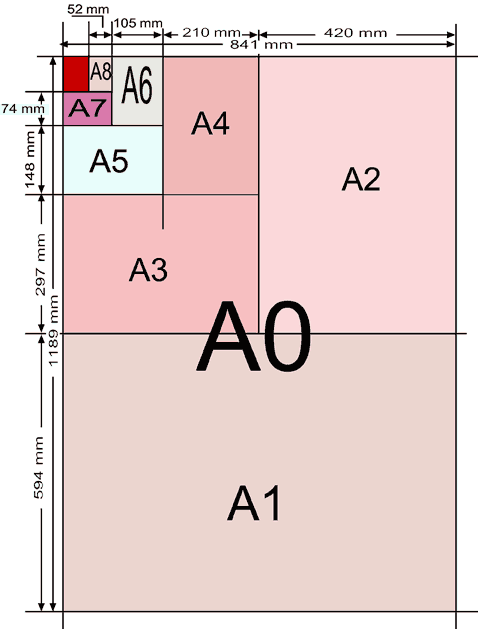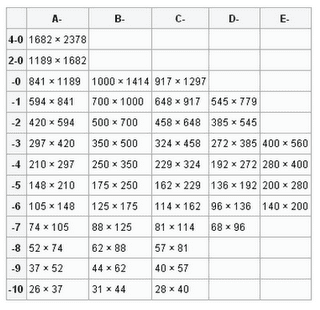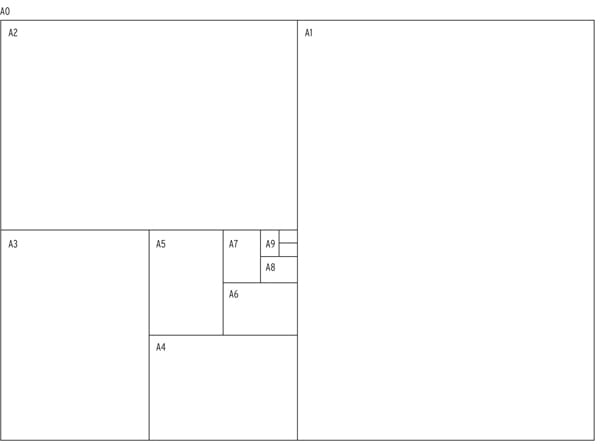For all designer or person who has some relationship with him paper and print it is essential to know and almost know by heart the different paper formats established as standard. The most generalized and used format is called DIN, which has a 1:? 2 ratio. Established in 1922 and created by the German engineer Dr. Walter Portmann.
Within the DIN format we can find three different variants that differ in their measurements: DIN-A, DIN-B, DIN-C, DIN-D, DIN-E. And that are in turn divided into other sub-formats depending on the number in question, DIN-A being the most extensive in measurements. You have to know that all of them are always indicated in millimeters.
DYNE:
El format reference of the A league It is called A0, whose surface measures 1 m2. And from this measure the lower measures are born. Each format of series A results from dividing the largest side of the format immediately above it in half, that is, it follows a 1:? 2 ratio. In this way, the A1 will be half of the A0 on its larger side, and the A2 will be half the Ai on its larger side, and thus proportionally with all the formats until reaching the A10, which is the smallest in the series.
Within the DIN-A, the most used formats on a daily basis are the A-4 (210 x 297 mm) and the A-3 (297 x 420 mm). And the least common are those ranging from Din-A 5 to Din-A10 due to their small size.
DIN is the acronym for German institute for standardization (translated into Spanish, the German Institute for Standardization).
images: technical drawing 09, wikipedia



The relationship between DIN-A formats is one to the square root of 2